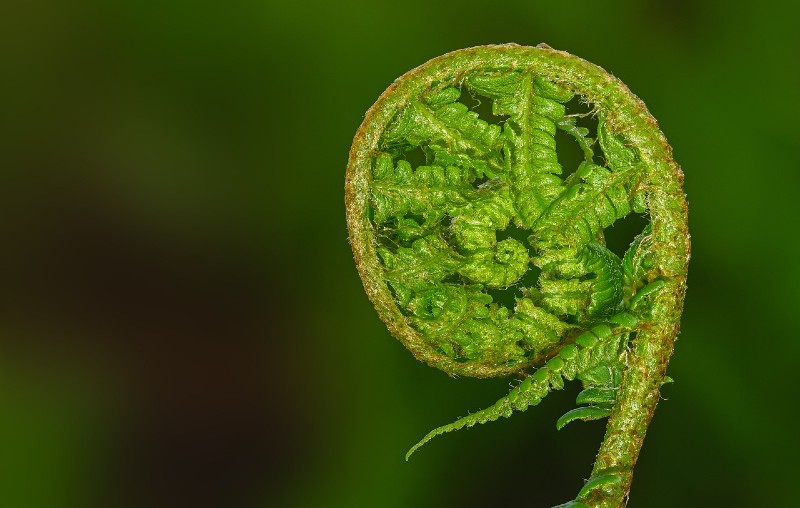What Do Fiddleheads Taste Like?
Quick Answer
Fiddleheads have a unique flavor that is often described as a cross between asparagus, spinach, and artichoke, with a slightly nutty and grassy undertone. Their texture is crisp when fresh and becomes tender when cooked. It’s important to cook them thoroughly, usually by boiling or steaming, as eating them raw or undercooked can be unsafe. Once cooked, they can be used in various dishes and pair well with ingredients like garlic, lemon, and butter.
What are Fiddleheads?
Fiddleheads are the young, coiled, edible fronds of certain fern species, most commonly the ostrich fern. They are named for their resemblance to the scroll of a fiddle and are harvested for use as a vegetable.
Found in moist, forested areas, fiddleheads are usually foraged in the spring when they are still tightly coiled and stand only a few inches off the ground.
They are considered a seasonal delicacy and are popular in various cuisines, particularly in North America and some Asian countries.
It’s crucial to cook fiddleheads thoroughly before consumption, as eating them raw or undercooked can result in foodborne illness. Proper preparation usually involves boiling or steaming for at least 10-15 minutes.
They are used in a variety of dishes, such as stir-fries, salads, and as a side dish, and have a flavor often described as a blend between asparagus, spinach, and artichoke. Always ensure proper identification and preparation when foraging for fiddleheads, as not all fern species are edible and some can be toxic.
What Do Fiddleheads Taste Like?
Initial Impressions
Fiddleheads have a unique taste that many liken to a combination of asparagus, spinach, and artichoke. This makes them a flavorful and versatile ingredient in many dishes.
Their initial flavor profile includes grassy and nutty notes, making them distinct yet familiar, especially if you enjoy green, leafy vegetables.
Nuances
- Subtleties in Flavor: Some people detect a hint of bitterness in fiddleheads, especially if they are not cooked properly. There’s rarely any noticeable sweetness, which differentiates them from vegetables like sweet peas or certain types of asparagus.
- How They Differ: Unlike spinach, which can become quite soft when cooked, or asparagus, which has a more fibrous texture, fiddleheads offer a tender yet crisp texture, creating a unique mouthfeel.
How the Flavor Changes When Cooked
Flavor Intensity: Cooking tends to mellow out the bitterness and intensify the nutty and earthy notes, integrating them more fully into the dish. This makes cooked fiddleheads a rich and complex addition to meals.
What is the Texture of Fiddleheads?
The texture of fiddleheads can vary depending on their freshness and how they are prepared. When freshly harvested, fiddleheads are generally crisp and firm to the touch, similar to a fresh green bean or asparagus spear.
This crispness makes them particularly appealing for quick-cooking methods like sautéing or stir-frying, though they can also be boiled or steamed.
Once cooked, fiddleheads become tender but typically retain a certain level of bite or “toothiness,” akin to al dente pasta or cooked spinach.
They are not as fibrous as mature ferns and not as soft as overcooked vegetables, offering a unique texture that is both tender and slightly chewy.
This makes them versatile in a variety of dishes, from salads and side dishes to stir-fries and even soups, where their unique texture can really stand out.
FAQs
Are Fiddleheads Sweet Or Bitter?
Fiddleheads are generally not sweet but can have a slight bitterness, especially if not cooked properly. Cooking tends to mellow out the bitterness.
Do Fiddleheads Have A Strong Flavor?
Fiddleheads have a distinct but not overpowering flavor. Their taste is unique but somewhat familiar if you enjoy green, leafy vegetables.
How Does The Flavor Of Fiddleheads Change When Cooked?
Cooking fiddleheads not only makes them safer to eat but also mellows out any bitterness and intensifies the nutty and earthy notes.
Can You Eat Fiddleheads Raw?
Eating raw or undercooked fiddleheads is not recommended due to the risk of foodborne illness. They should be boiled or steamed for at least 10-15 minutes before consumption.
How Do You Best Preserve The Flavor Of Fiddleheads When Cooking?
To preserve the flavor of fiddleheads, quick-cooking methods like sautéing or stir-frying are often recommended. However, they should be pre-cooked by boiling or steaming to ensure safety.
What Spices Or Flavors Pair Well With Fiddleheads?
Garlic, lemon, and butter are commonly used to enhance the natural flavors of fiddleheads. They also pair well with herbs like thyme and rosemary.
How Does The Texture Of Cooked Fiddleheads Compare To Other Vegetables?
Cooked fiddleheads become tender but still retain some bite, similar to cooked spinach or al dente pasta, offering a unique texture that stands out in dishes.
Are The Flavors Of Different Species Of Edible Fiddleheads Similar?
While the ostrich fern is the most commonly consumed fiddlehead, other edible species may have slightly different flavors and textures. Always make sure to properly identify the species before consuming.
Can Fiddleheads Be Used As A Substitute For Other Vegetables?
Due to their unique flavor, fiddleheads may not be a direct substitute for other vegetables, but they can be used in similar applications like stir-fries, salads, and side dishes.
What Do Fiddleheads Smell Like?
Fiddleheads have a fresh, earthy aroma that somewhat resembles the scents of other green vegetables like spinach or asparagus. The smell may also have a grassy note to it.
Some people find that the aroma intensifies during cooking, especially if you are steaming or boiling the fiddleheads. The scent is generally pleasant and not overpowering, adding to the culinary experience of using this seasonal delicacy.
How Can You Tell Fiddleheads Are Edible?
Determining the edibility of fiddleheads is crucial as not all species of ferns produce edible fiddleheads. The most commonly consumed variety is the ostrich fern. Here are some tips to identify edible fiddleheads:
- Color: Edible fiddleheads are usually bright green.
- Coil: Look for tightly coiled fronds; this indicates they are young and generally safer to eat.
- Texture: Edible varieties often have a smooth stem and may have a brown, papery covering that should be removed before cooking.
- Habitat: Ostrich ferns usually grow in moist, wooded areas near streams or rivers.
- Consult Experts: When in doubt, consult local experts or field guides to properly identify the species.
It’s always better to err on the side of caution; if you’re unsure about the edibility of a fiddlehead, do not consume it.
Can You Get Sick Eating Fiddleheads?
Yes, consuming raw or undercooked fiddleheads can make you sick. Fiddleheads have been associated with foodborne illnesses, including symptoms like diarrhea, nausea, and vomiting. To minimize this risk:
- Proper Cooking: Boil or steam fiddleheads for at least 10-15 minutes. Avoid eating them raw or lightly cooked.
- Cleaning: Thoroughly wash fiddleheads and remove any brown, papery covering before cooking.
- Storage: Keep them refrigerated and consume them within a few days of harvesting or purchasing.


